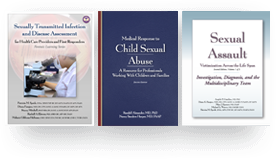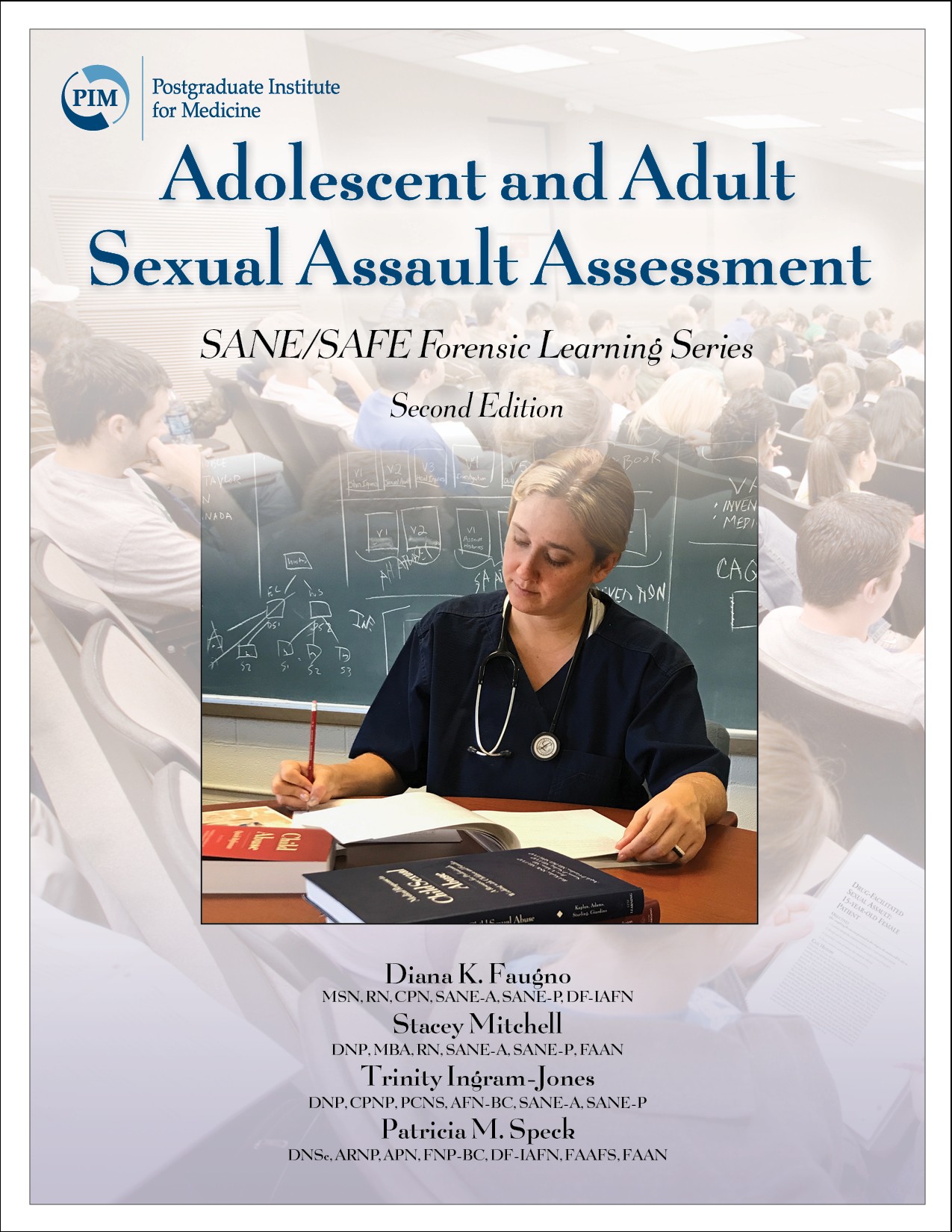The SANE/SAFE Forensic Learning Series is a great tool to both verify and expand the SANE’s knowledge of care of the patient who has been sexually assaulted. After reading the Case History the SANE is challenged to correctly identify anatomical structures and injuries as well as any normal variants by viewing detailed, clear photographs. The learner is instructed to list the specimens to be collected and medical treatment required.
The Case History Evaluation serves as both a review of concepts pertinent to the case, as well as to expand the knowledge of the learner in areas that may not typically be part of every SANE’s basic education or experience.
The Case History Evaluation takes the variations may occur within regions or programs into consideration and recognizes that examiners need to follow local protocols and be aware of resources available in their community.
The list of references following each Case History Evaluation is very helpful and provides direction to the SANE who wants to expand their knowledge even further.
Case review is an excellent tool to expand the SANE’s knowledge and encourage professional growth. The SANE/SAFE Forensic Learning Series provides many case scenario examples which test the critical thinking skills of the reader.
The Case History Evaluation makes a point to serve as both a review of concepts pertinent to the case, as well as expand the knowledge of the learner in areas that may not typically be part of every SANE’s basic education or experience. For example, Case #5 depicts a sexual assault of a college student on campus. Special considerations of rape on campus, including Title IX regulations and the Cleary Act which dictates the required response of the college to a student who reports sexual assault to campus personnel are explained. The investigation and disciplinary/grievance process on campus is different from that of a criminal investigation and navigating this process is challenging for both the student victim and the SANE.
Ellen Johnson, BA, RN, SANE-A, CEN
The second edition of Adolescent and Adult Sexual Assault Assessment is a superior guide to the identification and documentation of sexual assault in teenage and adult females and males. The large collection of full-color photographs and the detailed case studies included in this updated assessment offer clear guidance through the fundamentals of anogenital anatomy and the process of identifying abusive and nonabusive injury and normal variants in individuals presenting with a history of sexual assault. Using this book, readers will gain valuable experience in the identification and documentation of findings related to sexual violence. I highly recommend Adolescent and Adult Sexual Assault Assessment as a textbook for SANE/SAFE courses in general.
Rhonda Slocumb, RN, MSN
Lecturer
School of Nursing
Georgia Southwestern State University
Americus, Georgia
The second edition of Adolescent and Adult Sexual Assault Assessment is a readily usable tool for nurses new to forensic medical examinations and for experienced clinicians alike. To strengthen the clinical skills of the forensic nurse, the exercises in this book guide readers through the identification of anatomical structures, documentation of physical injuries, and the collection of evidence related to a variety of case histories. These exercises outline steps to address patients’ immediate needs and to provide much-needed help beyond the forensic examination. As a forensic nurse and an educator, I highly recommend this book for your collection. It will improve the quality of your approach to cases of sexual assault with evidence-based recommendations and techniques tailored to the unique situations you will face in the course of your practice.
Sarah Pederson, BSN, RN, SANE-A, SANE-P
SANE Coordinator
liveSAFE Resources
Marietta, Georgia














